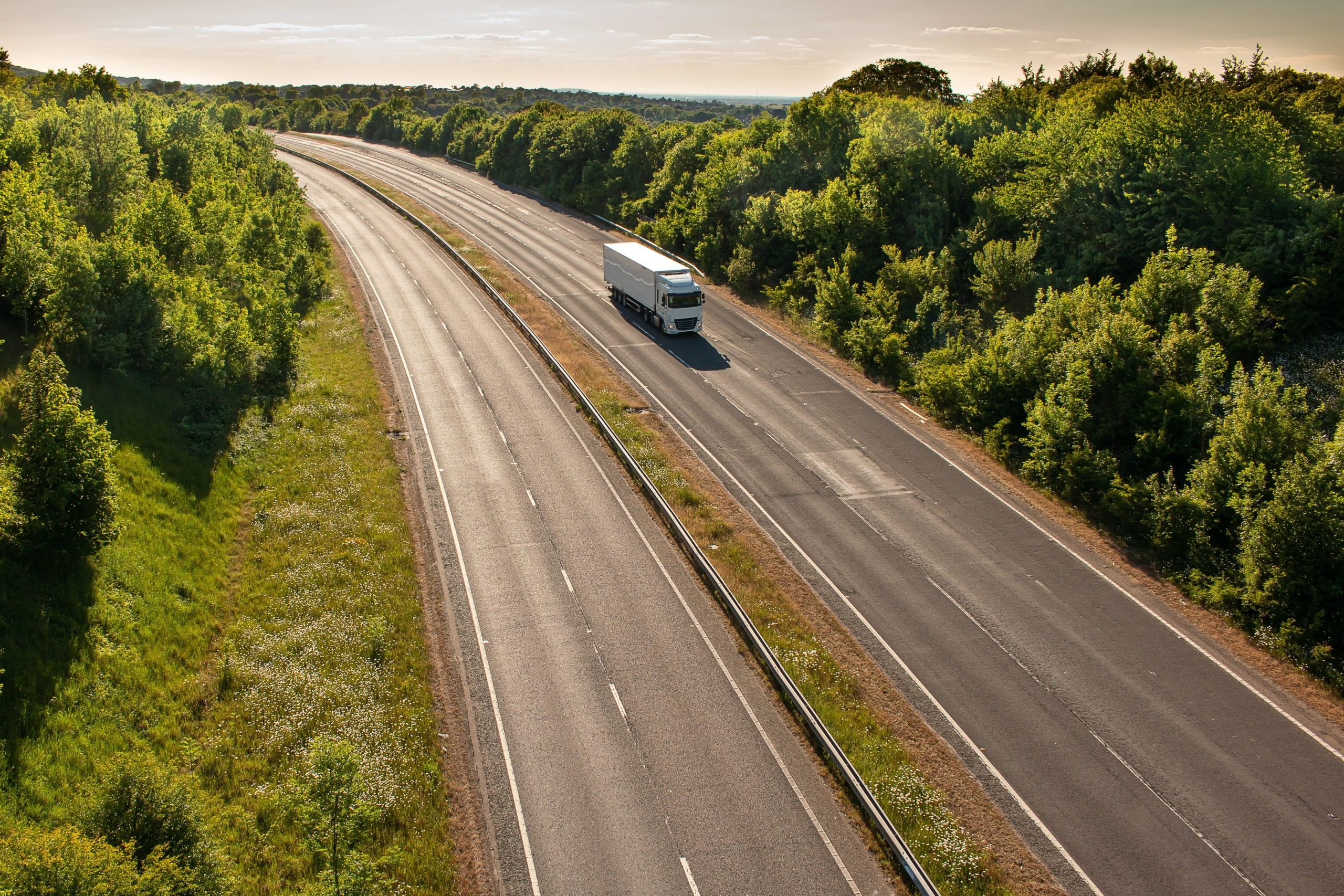Article
Sustainable Logistics
What are Scope 3 Emissions?
Scope 3 emissions are the indirect greenhouse gas emissions that occur both upstream and downstream of a company’s operations. They include a wide range of activities such as the production of goods and materials purchased, transport carried out by third parties, energy use in subcontracted warehouses, waste generated from operations, employee commuting and the eventual disposal of sold products. For most sustainable logistics and supply chain companies, Scope 3 emissions account for the most significant portion of their carbon footprint.
Why is scope 3 so complex?
Unlike Scope 1 and Scope 2, Scope 3 is more complex because it encompasses a broader range of stakeholders and activities across the entire value chain. Accurately measuring Scope 3 requires robust data collection, supplier engagement and sometimes the use of modelling where direct data is not available.
Despite the challenge, tackling Scope 3 is essential. It is increasingly expected under UK and international reporting standards and is central to achieving Science-Based Targets.
Hatmill specialises in helping businesses bring clarity to Scope 3 by identifying key categories, engaging with suppliers and building practical plans to reduce emissions. We support clients in focusing on the areas with the most significant carbon impact, such as transport operations, subcontracted warehousing and packaging. By doing so, we help organisations make meaningful reductions, strengthen supplier relationships and demonstrate leadership in sustainable supply chain management.
Scope 3 Categories
Scope 3 Upstream Emissions
Upstream emissions are generated before a product or service reaches your business. In logistics and supply chains, these include emissions from producing purchased goods and materials, fuel extraction and transport, third-party logistics providers, packaging manufacture, waste management and employee commuting. They can also arise from subcontracted warehousing, inbound transport from suppliers and energy use in supplier facilities.
Understanding these emissions helps identify where collaboration with suppliers can make the most significant difference. Businesses can reduce upstream emissions by reviewing procurement choices, optimising inbound logistics, consolidating supplier shipments, and engaging suppliers on their own carbon reduction plans.
Hatmill helps clients prioritise high-impact categories, benchmark supplier performance and design strategies that deliver real supply chain decarbonisation.
Upstream Categories:
- Purchased Goods and Services
- Capital Goods
- Fuel and Energy-Related Activities (not included in Scope 1 or 2)
- Upstream Transport and Distribution
- Waste Generated in Operations
- Business Travel
- Employee Commuting
- Upstream Leased Assets

Scope 3 Categories
Scope 3 Downstream Emissions
Downstream emissions occur after products leave your business and are often the most complex to influence. In logistics and distribution, these processes include outbound transport to customers, last-mile delivery, the use of sold products, and the end-of-life treatment of packaging and materials. They may also include energy used in customer facilities that store or handle goods.
Reporting these emissions provides a complete picture of an organisation’s impact. It is increasingly expected under frameworks such as the Streamlined Energy and Carbon Reporting (SECR) regulations, the Corporate Sustainability Reporting Directive (CSRD) and the Science Based Targets initiative (SBTi).
Hatmill helps businesses map downstream emissions, identify hotspots such as outbound logistics or packaging disposal, and develop reduction plans. Actions can include redesigning packaging, switching to lower-carbon delivery modes, or collaborating with customers to close material loops through collection and recycling initiatives.
Downstream Categories:
- Downstream Transport and Distribution
- Processing of Sold Products
- Use of Sold Products
- End-of-Life Treatment of Sold Products
- Downstream Leased Assets
- Franchises
- Investments

“Throughout our time working with Hatmill, I have remained impressed with the organisation, focus and tenacity of the team, and they have been instrumental in helping our organisation reach some critical decision points. The team are engaging, personable and a pleasure to work with.”
– Phil Wright, Head of Logistics, Greggs
Reduction of Emissions
How to Reduce Scope 3 Emissions
Reducing Scope 3 emissions depends on collaboration, data and influence across the value chain. In logistics, practical measures include working with suppliers to improve vehicle efficiency, transitioning freight to rail or sea where possible, and integrating low-carbon fuels into subcontracted transport contracts.
Within sustainable warehousing, actions such as reducing packaging, minimising waste and selecting more sustainable materials can significantly lower emissions.
Hatmill supports clients by mapping their Scope 3 footprint, focusing on high-impact areas and developing tailored action plans that deliver measurable reductions in both carbon and cost. We also help build engagement strategies to encourage suppliers and logistics partners to set their own sustainability targets, driving wider change across the supply chain network.

-
Why should businesses measure their Scope 3 emissions?
Scope 3 often accounts for the majority of a company’s carbon footprint. Measuring it allows businesses to identify where the most significant opportunities for reduction lie and demonstrate leadership in sustainable supply chain management. Scope 1, 2 & 3 Emissions Tracking Software
-
Why should public sector organisations measure Scope 3 emissions?
Public sector bodies are increasingly required to disclose full carbon footprints under government reporting frameworks. Measuring Scope 3 ensures accountability for procurement, contracted services and supply chain decisions, which represent a significant share of public sector emissions.
-
How are Scope 3 emissions calculated?
Scope 3 emissions are calculated by identifying relevant categories (upstream and downstream) and applying recognised emissions factors to activity data such as purchased goods, transport distances or fuel consumption. Where direct data is unavailable, credible estimation methods are used.
-
How can Scope 3 emissions be tracked?
Tracking Scope 3 emissions is simplified through digital tools such as Hatmill’s partnership with the Flotilla World platform. This enables businesses to collect data, categorise emissions and visualise results across the entire supply chain.
-
Are Scope 3 emissions double counting?
Scope 3 emissions are not considered double-counting when reported correctly. One company’s Scope 3 may appear as another’s Scope 1 or 2, but within each boundary, emissions are counted once to ensure a complete, consistent view across the value chain.
-
What are examples of Scope 3 activities in logistics?
Examples include subcontracted transport, warehousing provided by third parties, packaging materials, employee travel, and waste from operations. For logistics businesses, these are often the most material sources of emissions.
Our services
Explore more transport & logistics services from Hatmill
Scope 1 Emissions
Scope 1 emissions are the direct greenhouse gases a business produces through its own operations, such as fuel use, heating, and refrigerants. At Hatmill, we help organisations measure and reduce these emissions to cut costs, stay compliant, and progress towards net zero.
Scope 2 Emissions
Scope 2 emissions are the indirect greenhouse gases from purchased energy, such as electricity for warehouses, cold storage, or EV charging. At Hatmill, we help businesses cut these emissions through energy efficiency, renewable power, and sustainable operations.
Scope 1, 2 & 3 Emissions Tracking Software
Tracking emissions across transport, warehousing, and supply chains is evolving from manual spreadsheets to smarter, connected digital systems. Through our partnership with Flotilla, Hatmill helps businesses gain clear, data-driven insight to manage and reduce emissions across their operations.
Work with us
Send us a message
Share a few details with us and we’ll be in touch with you shortly.
Ideas & Insights
Related Insights
Our guides, ideas and views. Explore our insights to deliver tangible improvements to your supply chain and logistics operations.

